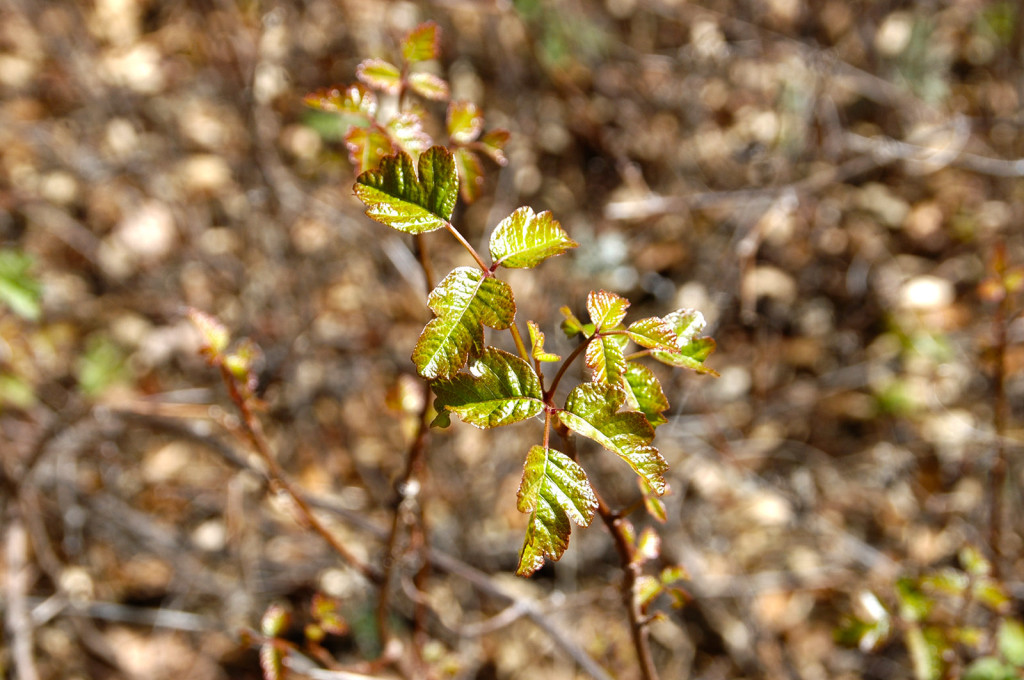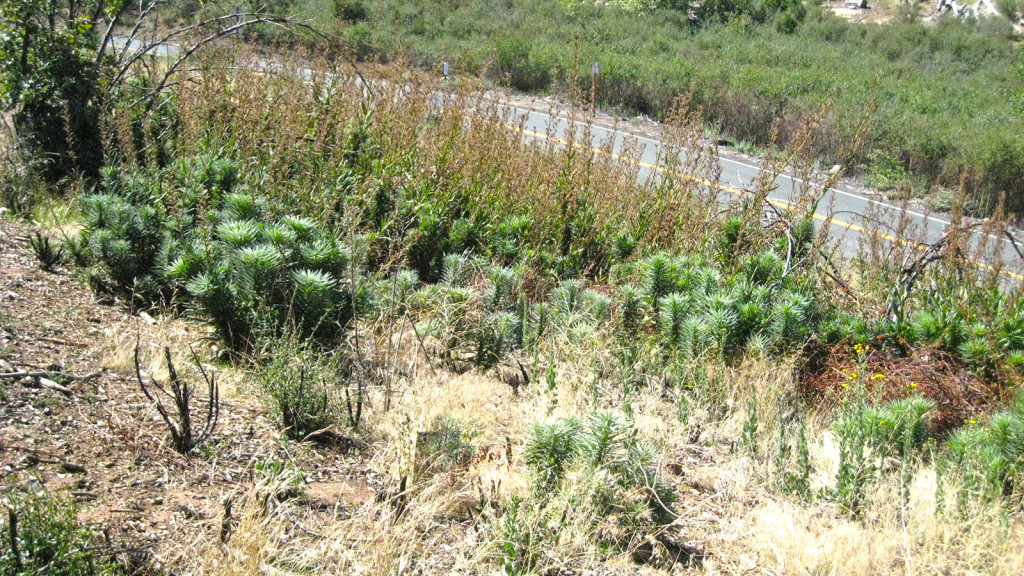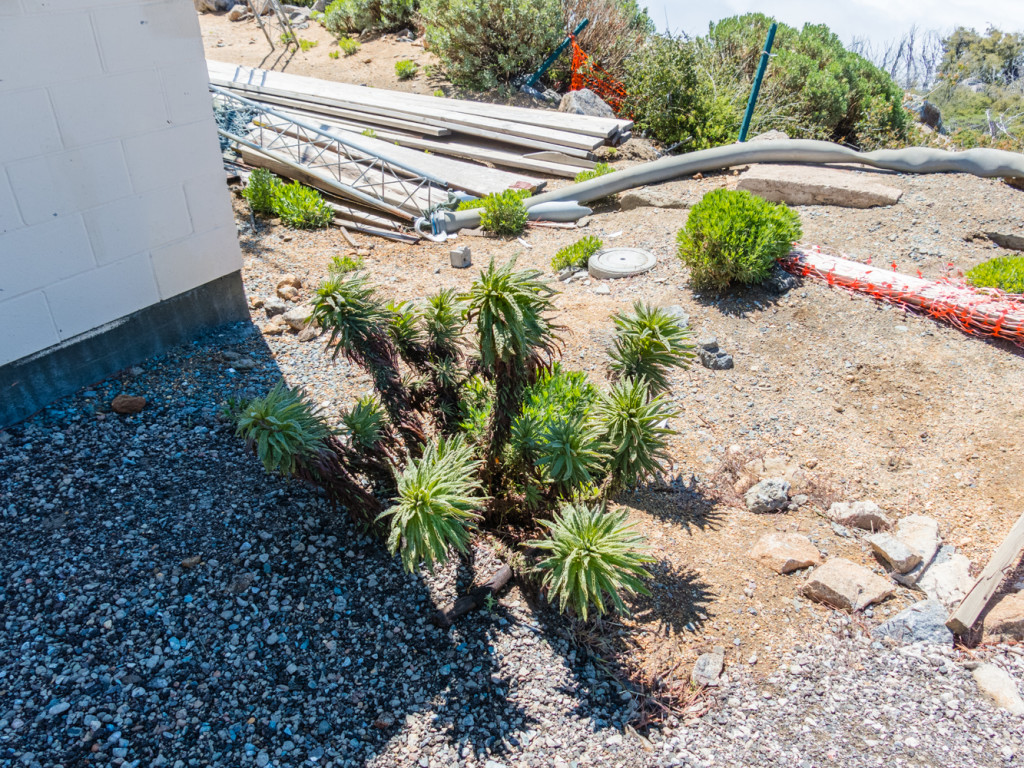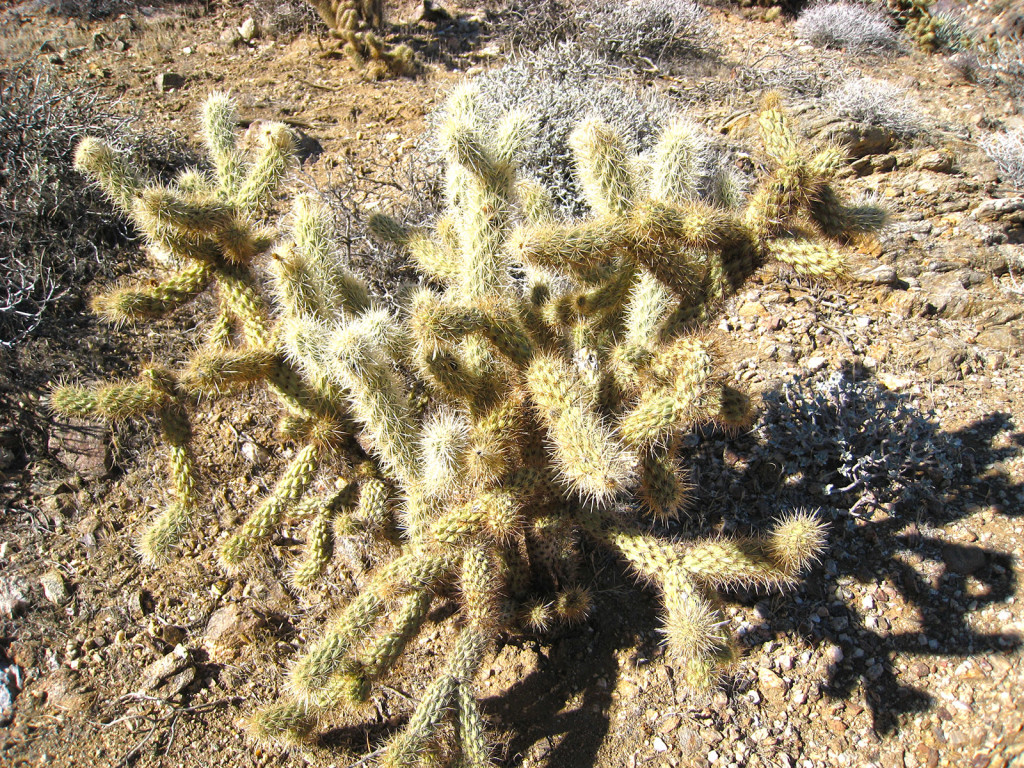
Keep an eye open for these plants while on the trail.
Plants that you need to keep an eye open for while you are on the trail.
Hiking in San Diego is a wonderful experience, but injuring yourself while you are hiking can really ruin the whole thing. On most of the trails I hike in San Diego I have not come across any plants that I need to be wary of, but recently while hiking I forgot to keep my eyes open and paid for the experience. A couple of days after the hike I started to notice and feel a nice itchy rash on parts of both of my arms, and other areas of my body. I didn’t remember any toxic plants although I did remember brushing up against some bush’s while looking for the trail. The idea that I had missed something was really bugging me. Knowing the area I had been hiking in had been in the middle of the Cedar Fire in 2003 I started to look around the net and came across the infamous “Poodle Dog Bush”, I had heard of it before and even seen the plant on a hike to Stonewall Peak, but I didn’t remember seeing it on the trail. Well as fate would have it I was taking a group on the same hike a week later so I made sure I knew what I was looking for and keep my eyes open and sure enough I started to see not only the Poodle Dog Bush along the trail but also a lot of Poison Oak. This got me thinking that I should make a little list of plants to be wary of while on the trail here in Sunny San Diego. So here goes.
Poison Oak:
In California, poison oak is everywhere, you are bound to run in to it somewhere on a hike. Poison Oak grows in a wide range of habitats, from sea level to 5,000 feet, in areas including open woodland, grassy hillsides, coniferous forests, and open chaparral. It is known for causing itching and rashes in humans after contact or inhalation. Characterized by alternate leaves with three or occasionally five veined, shiny leaflets, there are other traits that can help you recognize the plant. In spring, poison oak will produce small, white-green flowers at the point where the leaves attach to the stem. In early spring the young leaves are green or sometimes light red. In the late spring and summer the foliage is glossy green and later turns shades of orange and red. In winter time, poison oak will tend to lose it leaves.
Severity of poison oak skin reaction depends on the degree of patient sensitivity, the amount of exposure, and on which body parts are exposed. Some people may react in as little as 30 minutes while others may not show signs for up to 14 days. Usually within 24 to 72 hours of exposer an extremely itchy, red rash will appear, 15 to 20% of the population is immune to the allergenic reaction caused by poison oak and show no symptoms when exposed to the plant. Mild cases of poison oak last from seven to 10 days. Severe cases may last up to three weeks or longer
If you come into contact with poison oak, wash any equipment and or cloths as soon as you can, wash your cloths separate from all others and you may want to rewash them several times in order to ride your cloths and or equipment of all oils. The best way to prevent skin irritation is to pour a mild solvent such as isopropyl (rubbing) alcohol over the exposed area then wash with plenty of cold water; avoid using warm water, since it enhances the penetration of the oil. You also may want to use Tecnu to remove the oils from your skin. Use a cold compress, calamine lotion, non-prescription hydrocortisone cream, or an antihistamine to relieve itching, but if the area of rash gets to large or if you have more of a allergic reaction you may want to seek medical attention.
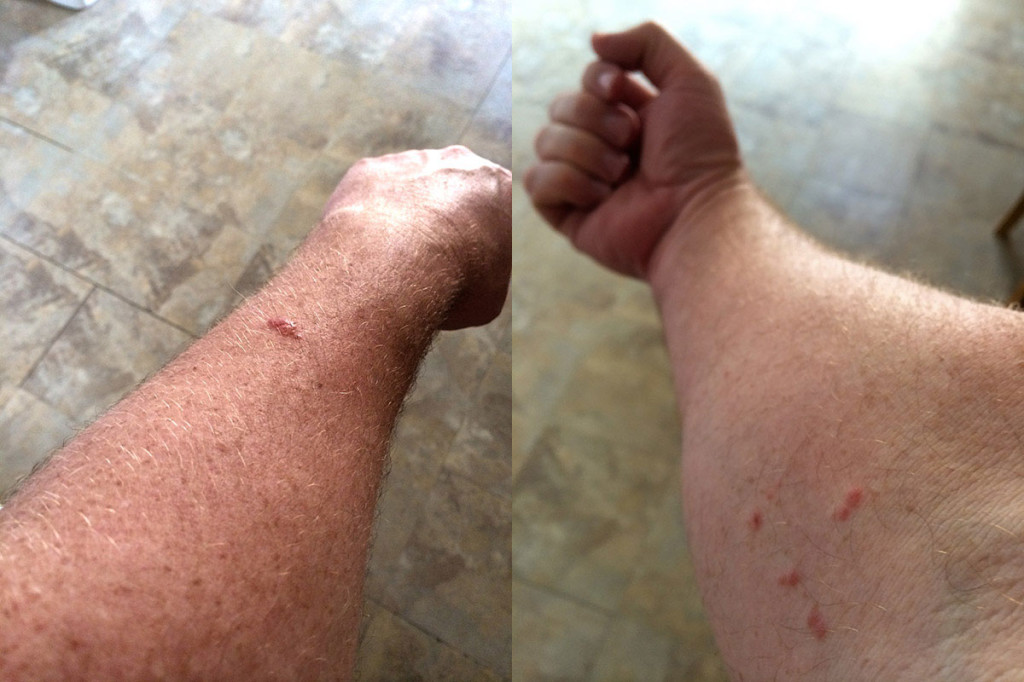
My skin a couple of days after coming into contact with the Poodle Dog Bush, that blister on the left lasted for 3 to 4 weeks.
Poodle Dog Bush:
I had never really heard of this plant until I was looking up information on hiking Stonewall Peak in San Diego and found someone warning of the plant towards the end of the hike, sure enough I found plenty of it there. This plant is limited to Sothern California and is a fire plant, the seeds remain dormant until after a fire and then the plant can seem to instantaneously appear, sometimes reaching heights of 10-12 feet tall. After which the plant will slowly decrease in size from year to year for about 10 years or so until it goes dormant again. Well guess what, there is a lot of burn areas in Sothern California, so don’t be surprised if you start seeing this bush along some of your favorite trails, in fact they opened a detour on the Pacific Crest Trail because a large section of it was overrun with this plant after a large fire in the area, but this plant does provide soil erosion control so you won’t see these plants eradicated. So if you are hiking in an area that was affected by fire in the last 10 years or so keep your eyes open.
Here is a great article from REI on the poodle dog bush. Poodle-dog bush causes severe irritation if touched, akin to poison oak or stinging nettle. It can raise blisters lasting as long as two weeks. This contact dermatitis is due to prenylated phenolics exuded by hairs (glandular trichomes) of the plant, for many people, symptoms are worse than a reaction to poison oak. Symptoms usually appear hours or days after touching the plant. If exposed to the bush, avoid scratching the affected area. Clothes, tools or other equipment that has come into contact should be handled with caution and washed separately from other clothes. Calamine or over-the-counter Hydrocortizone cream may provide some relief, but if blisters begin to form medical attention may be required. Poison Oak remedies such as Zanfel or Tecnu have little effect, but washing the area as soon as possible after exposure is advised.
Teddy-Bear Cholla, aka, Jumping Cholla Cactus:
This is another plant that I had no idea about until I went hiking in Anza Borrego at the Mortero Palms to Goat Canyon Hike. As I was looking up information on this hike I keep seeing warnings of this cactus and sure enough when I went on the hike this stuff was everywhere, although it is completely avoidable. The Jumping Cholla Cactus is found in the southwest of the United States, so parts of Southern California and Arizona. It grows in elevations up to 3000 feet. The sharp little spines of the cactus are hollow and have little barbs lined along the length of the spine, often with just the slightest touch the barbs will attach themselves to you and won’t let go for anything. I’ve read that using a comb to flick the cactus away (as long as its not imbedded into you at this point) works really well.
You may also need a pair of tweezers or pliers to pull of barbs that are individually stuck into your skin, after which you should apply some disinfectant to the area.
